Popular on Food52
Continue After Advertisement
45 Comments
gorltri
February 24, 2025
Love how this breaks down soap-making into simple steps! It’s fascinating how precise measurements create the perfect blend—just like crafting the perfect cup of Starbucks tea https://starbuckmenu.uk/ . Whether it’s balancing oils in soap or steeping tea at the right temperature, small details make a big difference. A soothing chamomile tea would pair wonderfully with a homemade lavender soap for a relaxing self-care moment!
Alvarez
February 1, 2025
Soapmaking is one of those hobbies that seems intimidating at first but quickly becomes second nature, especially once you experience the satisfaction of using something you made with your own hands. Like you, I’ve dabbled in different DIY projects, but few have given me the same sense of creativity and practicality as making my own soap. It’s rewarding, customizable, and, best of all, useful. If you're looking for more ways to explore hands-on crafts or find inspiration, I highly recommend checking out Honista APK ( https://www.honistahub.com/ )—it’s a great tool for discovering new ideas and sharing your progress with like-minded creators.
mecool
March 21, 2023
this is great! melt and pour soap making is also a good option for beginners. There are a lot of great suppliers for soap bases such as bramble berry, soapy twist, wholesale supplies and many more.
RUTH
March 18, 2022
Thank you for this but can I use shea butter to substitute all the oils and in what amounts
Darling
January 26, 2021
Thanks for this but how can one know the cooling state of oil ,lye and run calculation appreciatly please
Dominique D.
January 26, 2021
You can calculate the oils, lye, and water using a soap calculator found online. The most popular is soapcalc . net. Though if you use a recipe from The Soap Queen or Brambleberry, or most other websites and blogs, they've already calculated for you (as long as you don't make substitutions). As for cooling rates, it's all by experience. I first make my lye water with part water part ice, and then start melting my oils in a pot on the stove on a level #4 (my hob goes from 1 to 10). You want to get the oils melted and the temperature at about 120F to 130F while the lye water is also sitting around that temperature (when you make lye water, a chemical reaction takes place when you dissolve the lye, causing the solution to heat up a lot just by itself). I've never heated up my lye water once it was cool- but I've had to put too hot pot of oil outside in winter or in the fridge to cool a bit. You learn from experience. You don't need high heat for the oil to melt (coconut oils, etc., melt at a warm room temperature) but if you have beeswax in your recipe, that needs more heat to melt the mixture, so perhaps don't use beeswax your first time. It's not that much of an important additive anyway!
Dominique D.
August 13, 2020
Since this has just been reposted, a few things as an experienced soap maker and professional chemist:
1- Do not just sub out palm oil because you disagree with its use. The fatty acid profiles of other oils are different, and you'll end up with drying soap, soap that doesn't lather, etc., unless you sub in Lard or Tallow. Check other recipes online if you want to make that substitution for the correct ratios.
2- It is no longer recommended to make your lye water in glass pitchers. Use one of those plastic juice pitchers we remember from the 1990s (mine's a Rubbermaid 2 1/4 quarts #5 plastic).
3- You do no need to soap between 80 and 100F. Most of us add the lye water to the oils at around 130F...Each solution should be no more than 10F apart from one another (ie. the lye is 130F and the oil is sitting at 120F, or vice versa).
4- Don't waste your orange or citrus essential oils in making cold or hot process soap like this...it will not survive the saponification. You can use other oils such as rosemary, or lavender, but citrus just doesn't work. If you want a citrus, buy a citrus fragrance oil formulated for soap making from a soap supplier website.
5- The best molds are shoe boxes!! Line your shoebox with butcher paper (the kind that has a plastic side, and a parchment side), with the plastic side facing the soap surface. If you cover and insulate your box with blankets, it will go through a high heat 'gel' phase. If you don't cover it, it won't gel (or may just gel at centre). Gel is not important, it's just for looks.
You should really look into soap websites, like the Soap Queen, and tutorials on youtube. Susan Miller Cavitch's book is a bit outdated, though the basics are still good.
This recipe should make you about 15 to 20 bars.
1- Do not just sub out palm oil because you disagree with its use. The fatty acid profiles of other oils are different, and you'll end up with drying soap, soap that doesn't lather, etc., unless you sub in Lard or Tallow. Check other recipes online if you want to make that substitution for the correct ratios.
2- It is no longer recommended to make your lye water in glass pitchers. Use one of those plastic juice pitchers we remember from the 1990s (mine's a Rubbermaid 2 1/4 quarts #5 plastic).
3- You do no need to soap between 80 and 100F. Most of us add the lye water to the oils at around 130F...Each solution should be no more than 10F apart from one another (ie. the lye is 130F and the oil is sitting at 120F, or vice versa).
4- Don't waste your orange or citrus essential oils in making cold or hot process soap like this...it will not survive the saponification. You can use other oils such as rosemary, or lavender, but citrus just doesn't work. If you want a citrus, buy a citrus fragrance oil formulated for soap making from a soap supplier website.
5- The best molds are shoe boxes!! Line your shoebox with butcher paper (the kind that has a plastic side, and a parchment side), with the plastic side facing the soap surface. If you cover and insulate your box with blankets, it will go through a high heat 'gel' phase. If you don't cover it, it won't gel (or may just gel at centre). Gel is not important, it's just for looks.
You should really look into soap websites, like the Soap Queen, and tutorials on youtube. Susan Miller Cavitch's book is a bit outdated, though the basics are still good.
This recipe should make you about 15 to 20 bars.
Mona
January 26, 2021
I have been a professional soap maker. I have made soap for almost 25 years. I have made 1000’s of pounds of soap. I 100% disagree with you that the difference is significant enough to be noticeable to the majority of people. It’s just not. I appreciate your understanding of the difference in fatty acid profiles but your overstating the perceptual impact.
Jennifer
May 24, 2018
Hi how many bars of soap will this make and what is the approx. oz of the individual bars? I have to make 200 bars for my nieces wedding and trying to figure out recipes.
thanks
thanks
Mona
October 8, 2017
Please don't use palm oil. There are NO responsible sources. Coconut is better. But it will require the recipe be recalculated. Please just don't use Palm. Also, if you just leave your soap pot over night is is much easier to clean (as it is now just a soapy pot) than the oily caustic mess it is straight after making the soap.
Dominique D.
August 13, 2020
You can't just sub in coconut oil for palm oil. Each oil has a very different fatty acid profile, and will yield a different soap product. You need palm oil to have a bar with good lather and moisturising properties. Coconut oil's fatty acid profile is way too drying on the skin once saponified.
A good alternative to palm oil is LARD. Choose lard if you wish, but the ratios will need to be recalculated for perfect saponification without leftover lye.
A good alternative to palm oil is LARD. Choose lard if you wish, but the ratios will need to be recalculated for perfect saponification without leftover lye.
Mona
January 26, 2021
I have been a professional soap maker. I have made soap for almost 25 years. I have made 1000’s of pines of soap. I 100% disagree with you that the difference is significant enough to be noticeable to the majority of people. It’s just not. I appreciate your understanding of the difference in fatty acid profiles but your overstating the perceptual impact.
Soap
March 16, 2022
Wow thank you so much for the commet i feel touched coz am a kind of looking something like making soap buh i have no idea of it so would you please teach me the whole process.
+256708460295 whatsapp thank you!
+256708460295 whatsapp thank you!
Lmathes
July 12, 2016
I've always wanted to make my own soap, thanks for this. Can I sub shea butter into this recipe and if so, how would I do it, please?
Krystal T.
January 1, 2021
If you do, use a calculator like soapcalc to determine how to alter the recipe appropriately. Each oil and butter has a different saponification value, and just subbing a different one could cause your soap to be lye heavy (and burn your skin). Also, don't use teaspoons of any fragrance including essential oils. Each one has a skin safe usage rate you can get from the company you got it from. If they don't know what their usage rate is, don't use that brand.
sashalina
June 17, 2016
I've always wanted to learn to make soap, thank you for an easy and clear recipe. One question: I've never seen distilled water outside my high school chemistry class. Where does one get it? Or can tap water be used? Filtered tap water? Thank you!
Caitlin P.
June 17, 2016
You can find distilled water in gallon jugs at grocery stores, big box stores like Target and Walmart, and sometimes at drugstores. It's usually with the other bottled water. However, tap water will probably work fine as well. If your water is hard (high mineral content) it can cause issues, and distilled water lets you be more consistent from batch to batch, but it's unlikely to cause any major problems.
Johanna
June 2, 2016
There is no such thing as "responsibly sourced" palm oil. No one should be using palm oil. www.saynotopalmoil.com/
Johanna
June 2, 2016
I know there is. Just don't know what. Urban Cabin Soap Co. does not use palm oil. You can look at those ingredients. www.urbancabinsoapco.com
Heather T.
June 2, 2016
I use organic beef tallow in place of palm oil. It creates a silky, moisturizing soap, and saves a lot of waste from butchering cattle.
Panfusine
June 2, 2016
This recipe is Foolproof, I've even played around with the different oils, (just keeping the final volumes the same. made about 4 batches with different scents and ingredients) since the article was published last year.
Heather T.
January 14, 2016
Cannot wait to make a batch. But quick question - how large of a stock pot should I invest in? I have an 8 quart I can devote to soap making but wasn't sure if that was a sufficient size.
Erin
June 22, 2015
What size load soap mold do you recommend for the recipe noted above? Do I melt all oils to fluid ounce or go by weighted ounces?? Thanks!
Caitlin P.
June 22, 2015
A 4-lb or 5-lb wooden loaf mold will work well. (for example: http://www.amazon.com/Wooden-Soap-Molds-Make-Colapsable/dp/B00IDVTH7A)
Use weight, not fluid ounces.
Use weight, not fluid ounces.
Marian H.
May 27, 2015
There are actually 3 kinds of "trace". During the thin trace, when drizles leave a thin trace on the surface, it would be good to add the essential oil so that the oil will surely be evenly distributed before the soap seizes or gets too hard to pour. Also, some essential oils actually react with the soap and quicken the tracing so it is ideal to add the essential oils at this stage. At medium trace, when the drizzles on the surface are thicker and take a longer time to sink in, it is good to add the fine powders like cocoa or turmeric, or crushed dried herbs. At full trace, when a limp sits on the surface and takes bit of time to sink in, is the best time to quickly fold in heavier additives like oatmeal and flowers so that they won't settle on the bottom as when you add them in during thin trace.
Marian H.
May 27, 2015
This article is well-written, especially for beginners. Those that don't have molds for soap on hand might want to use cardboard or paper boxes like shoeboxes or the smaller food containers like the ones in which cheese is packed in my country. They need to be lined with parchment or waxed paper before the soap is poured in. Using these boxes is great because you can recycle or reuse containers that are otherwise thrown away and they can be disposed off after soapmaking if you worry about pets or kids getting at your soap-making tools. I usually stack my boxes and reuse them until they fall apart. It is also helpful to keep a spray bottle of white vinegar beside you for a quick spritz in case of splatters. The vinegar, being an acid, neutralizes the lye which is alkaline or base, saving you from skin irritation or burns. Of course, after the spritzing, you will still need to wash the affected area with water and soap.
Jennifer G.
May 27, 2015
Your tutorial left out that one should never use aluminum containers or utensils and why.
Caitlin P.
May 29, 2015
True! (For anyone else reading this, it's because lye will corrode it -- same goes for tin, iron, and teflon.)
cfelten
May 16, 2015
I would strongly suggest that anyone interested in soapmaking subscribe to any one of a number of Yahoo email groups on the subject. There are many generous soap makers out there who will share sources, tips for soaping with various fragrances (they are not all well behaved), and hold the new soapmaker's hand through the first batch. Make sure every inch of your skin is covered, wear your goggles and gloves, keep a basin of water laced with vinegar (in case of splashes the vinegar will help neutralize the lye) nearby and enjoy the wonderful creative world of soapmaking.
m T.
May 16, 2015
Another question about colors. So orange essential oil gives soap a yellowish color. What other colors can be used in soap? How about a turquoise?
Also, what do you know about adding some form of oatmeal, like in Aveno?
Also, what do you know about adding some form of oatmeal, like in Aveno?
Caitlin P.
May 18, 2015
For coloring you can purchase colorants (http://www.brambleberry.com/Colorants-C181.aspx) or use natural options (http://www.diynatural.com/natural-soap-colorants/) to get a wide variety of colors.
You would add oats at trace, right before pouring. It's nice if you grind the oats smaller first using a food processor or blender.
You would add oats at trace, right before pouring. It's nice if you grind the oats smaller first using a food processor or blender.

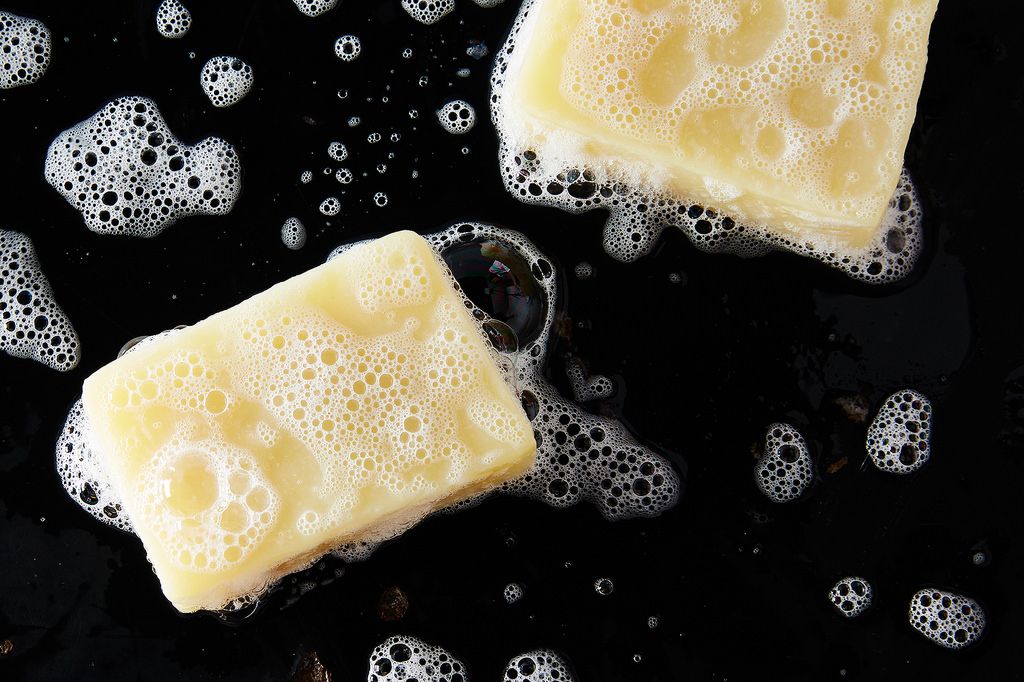
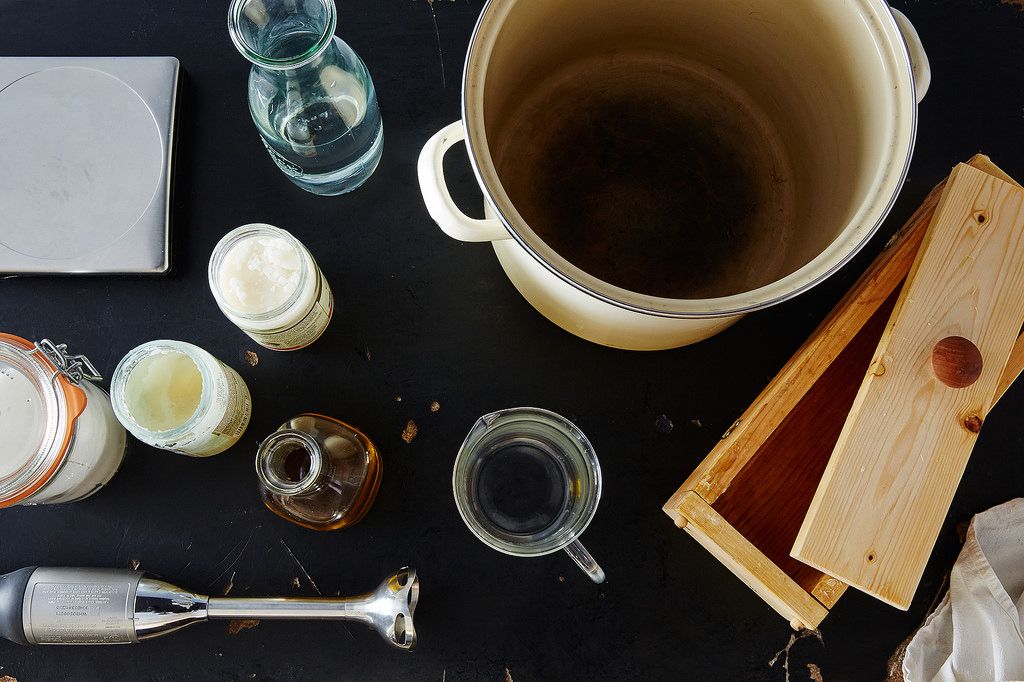
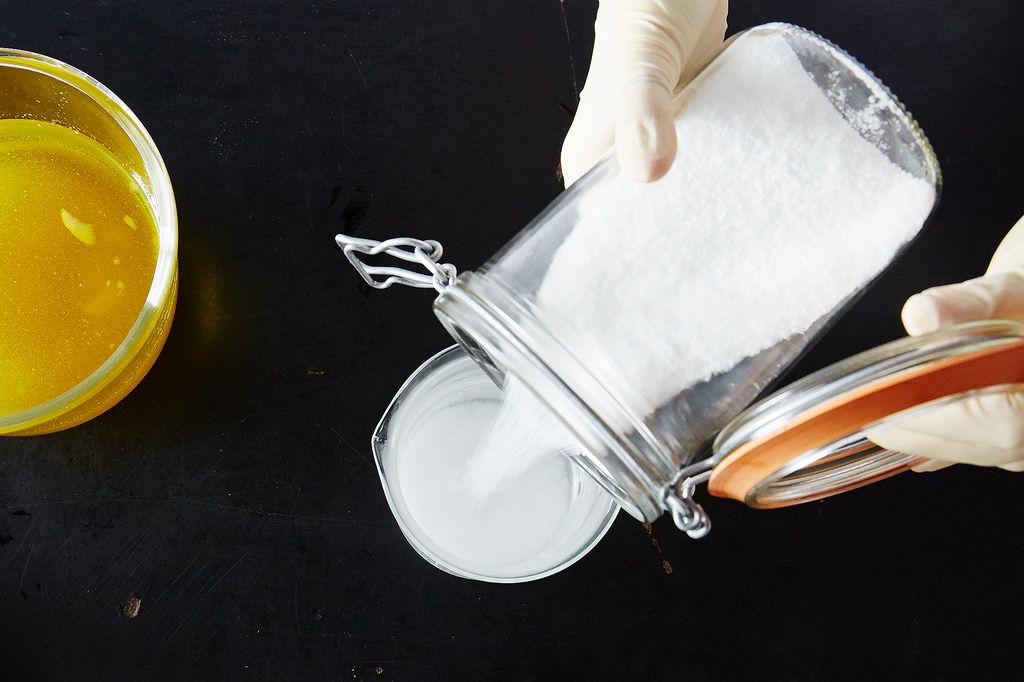
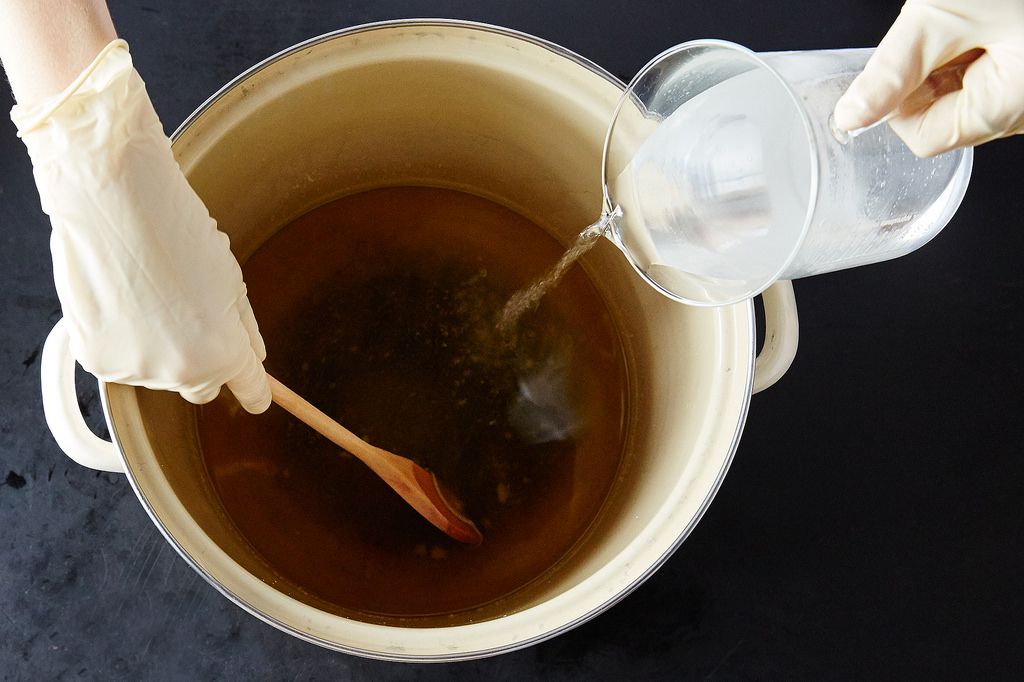
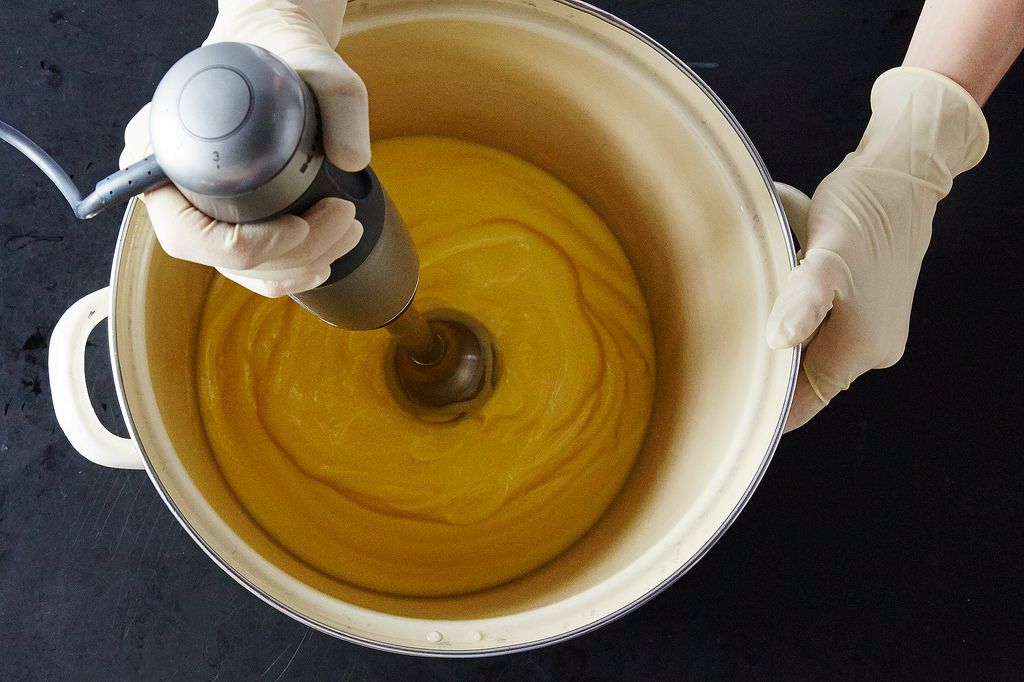
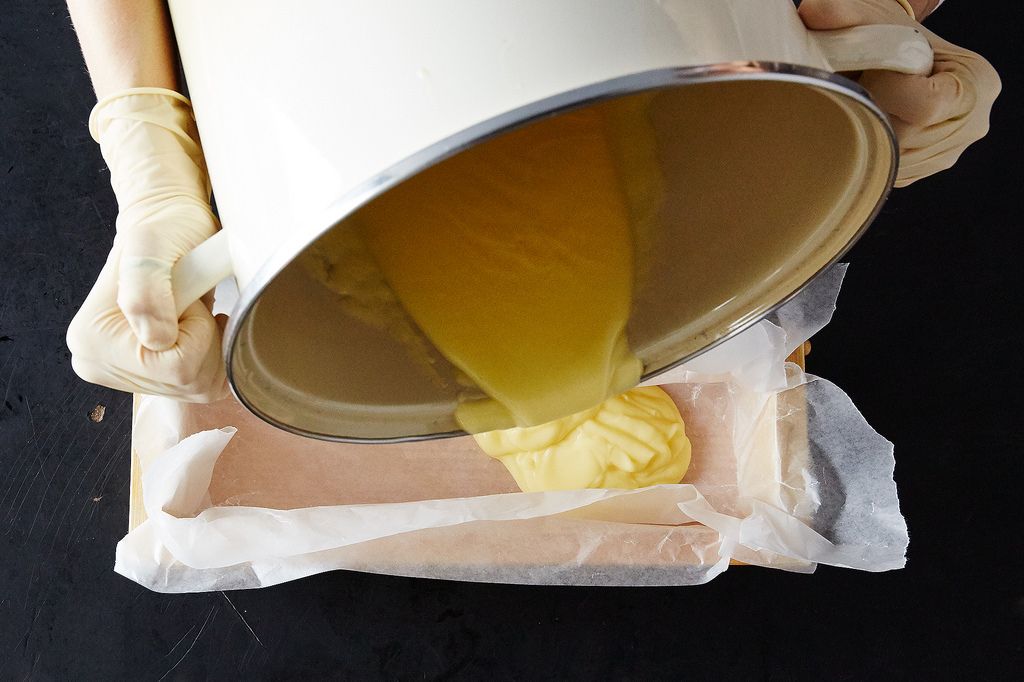

See what other Food52 readers are saying.